Your cart is currently empty!
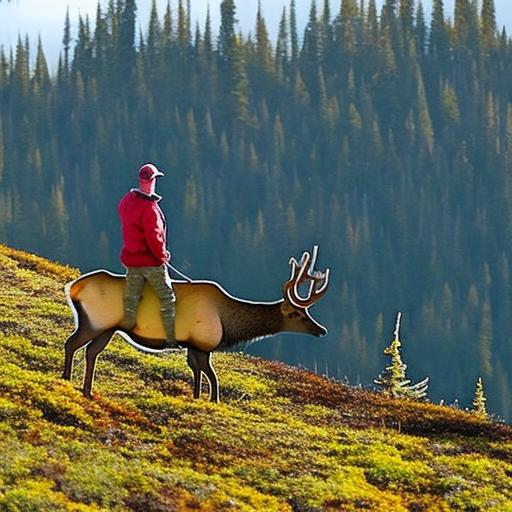
Exploring the Thrill of Elk Hunting in British Columbia: A Guide to a Memorable Experience

Elk hunting in British Columbia is a popular activity for both locals and tourists alike. British Columbia is known for its vast wilderness and abundant wildlife, making it an ideal destination for hunters looking to pursue elk. The province is home to a healthy population of elk, providing ample opportunities for hunters to test their skills and enjoy the thrill of the hunt.
Elk hunting in British Columbia offers a unique experience due to the diverse terrain and landscapes found throughout the province. From dense forests to open meadows, hunters can choose from a variety of hunting locations that suit their preferences and hunting style. Whether you prefer stalking through the woods or glassing from a high vantage point, British Columbia has something to offer every hunter.
Key Takeaways
- Elk hunting in British Columbia is a popular and exciting outdoor activity for hunters.
- Planning ahead and researching the best time to hunt, essential gear, and hunting techniques is crucial for a successful trip.
- The best time to hunt elk in British Columbia is during the rutting season in September and October.
- Essential gear for elk hunting includes a rifle, binoculars, and appropriate clothing and footwear.
- Understanding elk behavior and habitat, as well as practicing safety and ethical hunting practices, is important for a successful and enjoyable trip.
Planning Your Elk Hunting Trip in British Columbia
Before embarking on an elk hunting trip in British Columbia, it is important to do thorough research and planning. This includes familiarizing yourself with hunting regulations and licensing requirements in the province. British Columbia has specific rules and regulations regarding elk hunting, including bag limits, hunting seasons, and licensing fees. It is essential to understand and comply with these regulations to ensure a legal and successful hunt.
Choosing a hunting outfitter or guide is another crucial aspect of planning your elk hunting trip. A reputable outfitter or guide can provide valuable knowledge and expertise, increasing your chances of a successful hunt. They can also assist with logistics such as transportation, accommodations, and field dressing services. When selecting an outfitter or guide, it is important to consider their experience, reputation, and client reviews.
Selecting the right hunting location is also an important factor in planning your elk hunting trip. British Columbia offers a wide range of hunting areas, each with its own unique characteristics and elk populations. Some areas may have higher densities of elk, while others may offer more challenging terrain or remote wilderness experiences. Researching different hunting locations and considering factors such as accessibility, terrain, and elk populations can help you choose the best location for your hunting trip.
The Best Time to Hunt Elk in British Columbia
Elk hunting seasons in British Columbia typically run from September to December, with specific dates varying depending on the region and hunting method. The best time to hunt elk in British Columbia can vary depending on several factors, including weather conditions, elk behavior, and hunting pressure.
Early season hunts in September and October can be productive as elk are still in their summer patterns and may be more predictable. During this time, elk can often be found in higher elevations where they feed on grasses and forage. However, early season hunts can also be challenging as elk may still be in large groups and more difficult to locate.
The rut, or mating season, typically occurs in late September to early October. This can be an exciting time to hunt elk as bulls are more vocal and active, making them easier to locate. The rut can also provide opportunities for calling and decoying strategies. However, hunting during the rut can also be more challenging as bulls may be more focused on breeding and less responsive to calls.
Late season hunts in November and December can also be productive as elk begin to transition to their winter ranges. During this time, elk may be concentrated in lower elevations where they feed on shrubs and browse. Late season hunts can offer opportunities for spot-and-stalk hunting as well as ambush tactics near feeding areas.
Essential Gear and Equipment for Elk Hunting in British Columbia
| Essential Gear and Equipment for Elk Hunting in British Columbia |
|---|
| Rifle or Bow |
| Ammunition or Arrows |
| Binoculars |
| Backpack |
| Clothing Layers |
| Boots |
| GPS or Map and Compass |
| Headlamp or Flashlight |
| First Aid Kit |
| Water Bottle or Hydration System |
| Food and Snacks |
| Game Bags |
| Knife and Sharpener |
| Rope or Paracord |
| Binocular Harness |
When planning an elk hunting trip in British Columbia, it is important to have the right gear and equipment to ensure a safe and successful hunt. Some essential gear and equipment for elk hunting include:
– A reliable rifle or bow: Choose a firearm or bow that you are comfortable with and proficient in using. Make sure it is properly sighted in and meets legal requirements for hunting elk in British Columbia.
– Ammunition or arrows: Bring enough ammunition or arrows for your hunting trip, considering factors such as shot opportunities and potential follow-up shots.
– Optics: Good quality binoculars and a spotting scope can be invaluable for locating and assessing elk from a distance.
– Clothing and footwear: Dress in layers to accommodate changing weather conditions. Choose clothing that is quiet, scent-free, and blends in with the natural surroundings. Invest in a good pair of waterproof and insulated boots for navigating rugged terrain.
– Backpack: A sturdy backpack is essential for carrying gear, water, food, and other essentials during your hunt.
– Calls and decoys: Elk calls and decoys can be effective tools for attracting elk during the rut. Practice using different calls and decoy setups to increase your chances of success.
– Field dressing kit: A field dressing kit should include items such as a sharp knife, game bags, latex gloves, and a bone saw for processing the elk after a successful hunt.
When packing for your elk hunting trip, it is important to consider weight restrictions and pack efficiently. Prioritize essential items and avoid overpacking unnecessary gear. It is also important to familiarize yourself with the specific regulations regarding transportation of firearms and hunting equipment when traveling to British Columbia.
Understanding Elk Behavior and Habitat in British Columbia
To increase your chances of a successful elk hunt in British Columbia, it is important to understand elk behavior and habitat. Elk are social animals that live in herds, typically consisting of cows, calves, and bulls. During the rut, bulls will compete for dominance and breeding rights by bugling, displaying aggressive behavior, and engaging in physical battles.
Elk in British Columbia can be found in a variety of habitats, including forests, meadows, mountains, and river valleys. They are adaptable animals that can thrive in different environments as long as there is sufficient food, water, cover, and space. Elk are primarily herbivores, feeding on grasses, forbs, shrubs, and tree bark.
To increase your chances of locating elk, it is important to scout and familiarize yourself with their preferred habitats. Look for signs such as tracks, droppings, rubs, and wallows. Pay attention to food sources such as meadows, clearcuts, and agricultural fields. Elk are most active during the early morning and late afternoon, so plan your hunting trips accordingly.
Hunting Techniques and Strategies for Elk in British Columbia
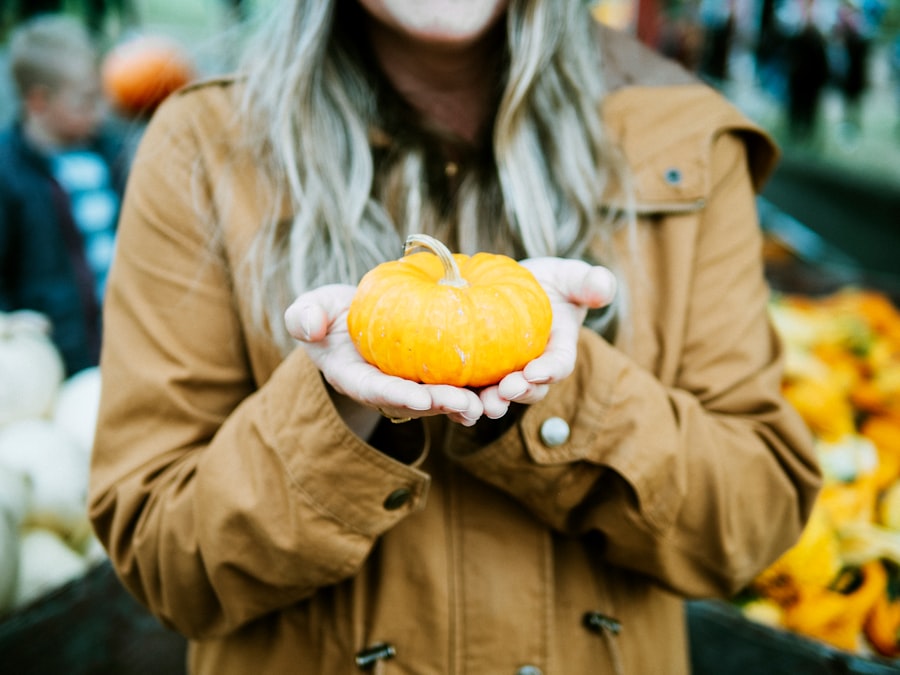
There are various hunting techniques and strategies that can be effective for elk hunting in British Columbia. Some popular techniques include spot-and-stalk hunting, calling, and ambush tactics.
Spot-and-stalk hunting involves glassing for elk from a distance and then closing the distance on foot to get within shooting range. This technique requires patience, stealth, and good optics to locate elk and plan a successful stalk. Spot-and-stalk hunting can be effective in open terrain where visibility is good.
Calling is another popular technique for elk hunting in British Columbia, especially during the rut. Elk calls such as bugles, cow calls, and estrus calls can be used to imitate elk vocalizations and attract bulls. It is important to practice using different calls and understand the nuances of elk vocalizations to effectively call in elk.
Ambush tactics involve setting up near known elk travel routes or feeding areas and waiting for elk to come within shooting range. This technique can be effective during the late season when elk are concentrated in specific areas. It requires careful scouting and knowledge of elk behavior and movement patterns.
When choosing a hunting technique or strategy, it is important to consider factors such as terrain, weather conditions, elk behavior, and personal preferences. It is also important to be adaptable and willing to adjust your approach based on changing circumstances during your hunt.
Safety Tips for Elk Hunting in British Columbia
Safety should always be a top priority when elk hunting in British Columbia. The wilderness can be unpredictable, and it is important to take precautions to ensure a safe and enjoyable hunting experience. Some safety tips for elk hunting include:
– Familiarize yourself with the hunting regulations and safety guidelines in British Columbia. This includes understanding firearm safety, hunting ethics, and proper handling of harvested game.
– Always let someone know your hunting plans, including your intended location, expected return time, and emergency contact information. Consider using a satellite communication device or carrying a personal locator beacon for emergencies.
– Dress appropriately for the weather conditions and terrain. Layer clothing to stay warm and dry, and wear blaze orange or other high-visibility clothing to increase your visibility to other hunters.
– Carry a first aid kit and know how to use it. Be prepared for potential injuries or emergencies in the field.
– Practice proper firearm safety at all times. Treat every firearm as if it is loaded, keep the muzzle pointed in a safe direction, and only shoot when you have a clear target and backstop.
– Be aware of your surroundings and watch for other hunters in the area. Communicate with other hunters if you encounter them to ensure everyone’s safety.
– Stay hydrated and well-nourished during your hunt. Carry enough water and food to sustain yourself throughout the day.
Conservation and Ethics in Elk Hunting in British Columbia
Conservation and ethical hunting practices are important considerations when elk hunting in British Columbia. The province has implemented various conservation measures to ensure the long-term sustainability of elk populations and their habitats.
It is important for hunters to understand and comply with these conservation measures, including bag limits, licensing requirements, and reporting obligations. By following these regulations, hunters can contribute to the overall health of elk populations and help maintain a balanced ecosystem.
Ethical hunting practices also play a crucial role in ensuring a sustainable future for elk hunting in British Columbia. This includes practicing fair chase, which means giving elk a reasonable chance to escape and avoiding unethical practices such as shooting from vehicles or using illegal methods.
Respecting private property and obtaining permission from landowners before hunting on their land is another important ethical consideration. It is also important to properly dispose of waste and carcasses to minimize the impact on the environment and prevent the spread of diseases.
By practicing conservation and ethical hunting, hunters can contribute to the preservation of elk populations and their habitats for future generations to enjoy.
Processing and Preparing Elk Meat in British Columbia
Processing and preparing elk meat is an important part of the hunting experience in British Columbia. Elk meat is highly regarded for its flavor, tenderness, and nutritional value. Proper processing and preparation techniques can ensure that the meat is safe to consume and enjoyable to eat.
After a successful hunt, it is important to field dress the elk as soon as possible to cool the meat and prevent spoilage. This involves removing the internal organs and properly cleaning the carcass. It is important to handle the meat with clean hands and tools to avoid contamination.
Once the elk is field dressed, it can be transported to a processing facility or butcher for further processing. Many hunters choose to process their own meat, which requires knowledge of basic butchering techniques. This includes breaking down the carcass into primal cuts such as steaks, roasts, and ground meat.
Proper packaging and storage are essential for preserving the quality of elk meat. Vacuum-sealing or wrapping the meat in freezer paper can help prevent freezer burn and extend its shelf life. It is important to label each package with the date and cut of meat for easy identification.
When cooking elk meat, it is important to treat it like lean beef or venison. Elk meat is naturally low in fat, so it can easily become dry if overcooked. It is best cooked to medium-rare or medium doneness to retain its tenderness and flavor. Marinating or using a slow cooking method can also help enhance the flavor and tenderness of elk meat.
Other Outdoor Activities to Enjoy in British Columbia while Elk Hunting
While elk hunting is the main focus of a hunting trip in British Columbia, there are also other outdoor activities to enjoy in the region. British Columbia offers a wide range of recreational opportunities, including fishing, hiking, wildlife viewing, and photography.
British Columbia is known for its pristine rivers and lakes, making it a popular destination for fishing enthusiasts. Whether you prefer fly fishing for trout in mountain streams or trolling for salmon in the ocean, there are plenty of fishing opportunities to explore.
Hiking is another popular activity in British Columbia, with numerous trails and wilderness areas to explore. From coastal rainforests to alpine meadows, there are hiking trails for all skill levels and interests. Hiking can be a great way to immerse yourself in nature and appreciate the beauty of the surrounding landscapes.
Wildlife viewing and photography are also popular activities in British Columbia. The province is home to a diverse range of wildlife, including bears, wolves, moose, and eagles. Taking the time to observe and photograph these animals in their natural habitats can be a rewarding experience.
Elk hunting in British Columbia offers a unique and thrilling experience for hunters of all skill levels. With its vast wilderness, diverse landscapes, and abundant wildlife, British Columbia provides an ideal setting for pursuing elk. By thoroughly researching and planning your hunting trip, understanding elk behavior and habitat, practicing safe and ethical hunting practices, and properly processing and preparing elk meat, you can ensure a successful and enjoyable hunting experience in British Columbia. So start planning your elk hunting trip today and get ready for an unforgettable adventure in the wilds of British Columbia.
If you’re interested in British Columbia elk hunting, you might also want to check out this article on “How to Hunt Grouse Without a Dog” from Old Oak Syndicate. Grouse hunting can be a thrilling and challenging experience, and this article provides valuable tips and techniques for hunters who prefer to hunt without the assistance of a dog. Whether you’re a beginner or an experienced hunter, this article offers insights that can enhance your grouse hunting adventures. Read more
FAQs
What is British Columbia elk hunting?
British Columbia elk hunting refers to the activity of hunting elk in the province of British Columbia, Canada.
When is the elk hunting season in British Columbia?
The elk hunting season in British Columbia typically runs from September to November, with specific dates varying by region and hunting method.
What are the regulations for elk hunting in British Columbia?
Elk hunting in British Columbia is regulated by the government and hunters must have a valid hunting license and tag. There are also restrictions on hunting methods, bag limits, and hunting areas.
What equipment is needed for elk hunting in British Columbia?
Elk hunters in British Columbia typically use rifles or bows, and must also have appropriate clothing, footwear, and camping gear if planning to stay overnight in the wilderness.
Where are the best places to go elk hunting in British Columbia?
British Columbia has many areas with healthy elk populations, including the Kootenay region, the Cariboo Mountains, and the Peace River region.
What is the success rate for elk hunting in British Columbia?
The success rate for elk hunting in British Columbia varies depending on the region and hunting method, but is generally around 20-30%.

Herb has been a longtime lover of the outdoors. Whether it be hunting, camping, fishing or just getting outside to reset. Proud father and animal lover. Bourbon anyone?

by
Tags:
Comments

Categories
- Big Game Hunting (301)
- Deer (202)
- Reviews (3)
- Shooting (16)
- Slingshot (1)
- Small Game Hunting (42)
- Upland Hunting (126)
- Waterfowl Hunting (3)

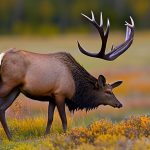
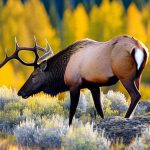
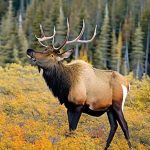
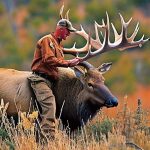
Leave a Reply